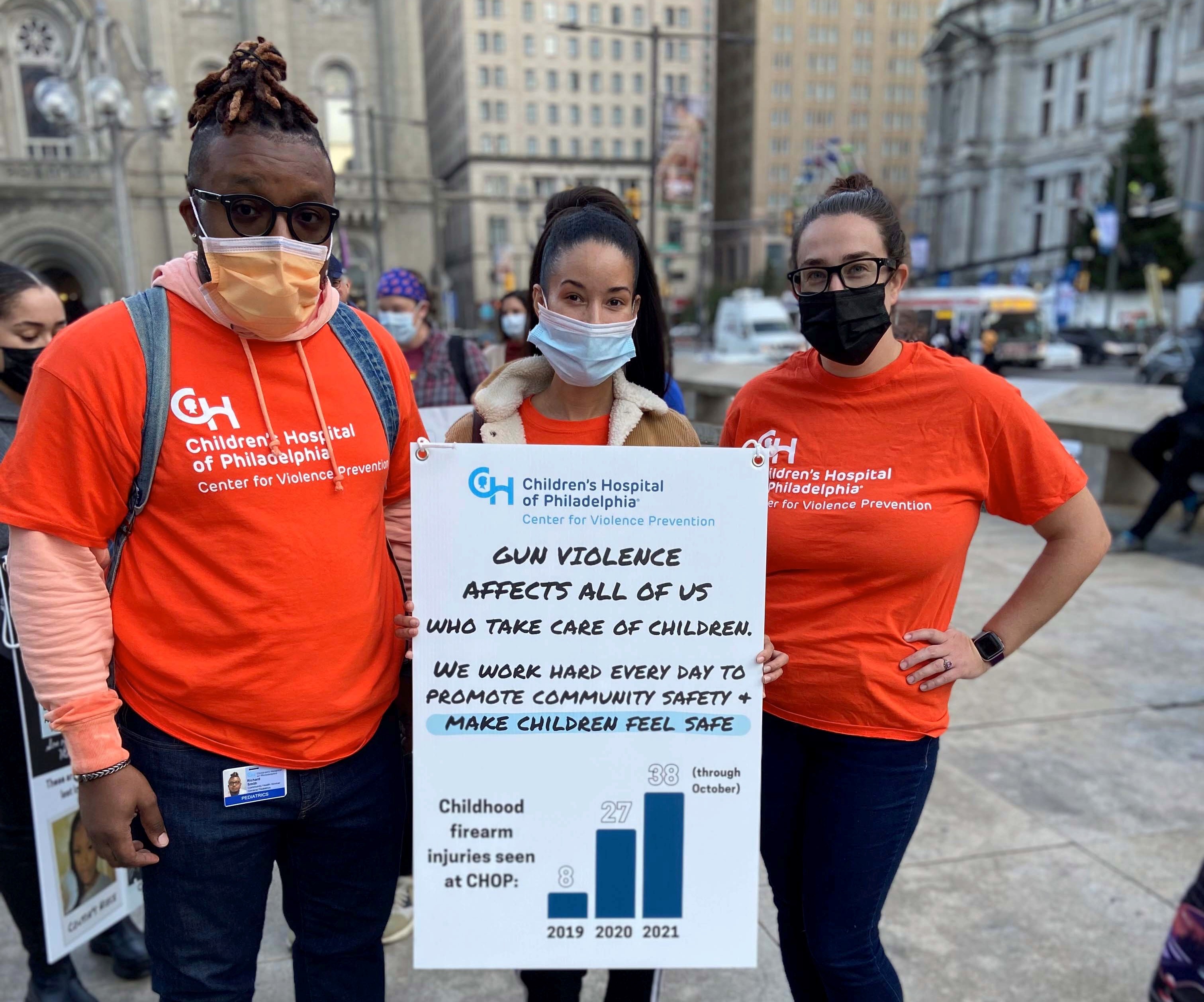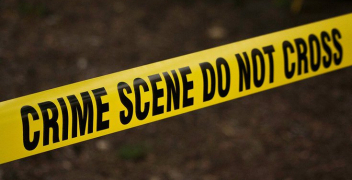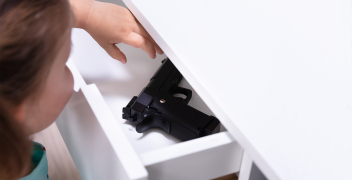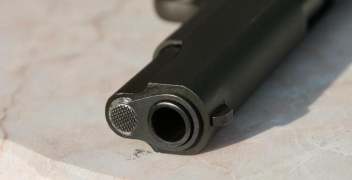Gun Violence
Gun violence, as many Americans see through television, social media, and other news outlets, is often perceived as random, mass shootings in public places. As horrifying as those events may be, they display only a fraction of the impact of daily gun violence that exists in our neighborhoods and towns. Every day in America, 32 children and teens are injured and seven are killed by gunfire, according to the Centers for Disease Control and Prevention.
While the causes of violence are many, the presence of a firearm can turn a dangerous situation into a lethal one, whether it be homicide, suicide or accidental injury. In 2019, the American Academy of Pediatrics included reducing firearm-related deaths and injuries among its federal advocacy priorities, highlighting that this issue impacts all Americans, regardless of where they live. Firearm mortality rates for young people are the same in big cities as they are in small rural counties, according to CHOP research. The difference is in the intention: Rural areas see more suicides and unintentional gun-related deaths, while urban areas suffer more gun-related homicides. The types of guns used also vary-- handguns predominate in larger cities, while long guns and rifles are seen with increased frequency in rural areas.
Gun violence requires a comprehensive approach to prevention and treatment. Across the medical community there is consensus that countermeasures to this national epidemic do exist and can be implemented through enacting laws or improving public policy.
Gun Violence Prevention and Advocacy at CHOP
- Guiding Principles to Keep Children Safe: CHOP's Violence Prevention Advocacy Statement
Children’s Hospital of Philadelphia (CHOP) is committed to reducing exposure to, and the impact of, violence among children and families. A key part of this mission is preventing firearm-related violence. We approach this issue through the lens of public health promotion and injury prevention. As with other public health issues, we believe an evidence-based and trauma-informed approach to firearm safety is necessary to keep children and families safe.
Firearms are the leading cause of death for children and teens ages 1-19 in the United States. The overall rate of firearm-related death and injury in children has increased over the past decade, and rate of firearm-related suicide in children has increased by over 30%. Action from local, state, and federal policymakers is critical to curbing these trends and preventing harm.
CHOP’s Office of Government Affairs, Community Relations & Advocacy, in partnership with the Center for Violence Prevention and PolicyLab, has adopted principles to guide families, advocates, and politicians who are working to end violent acts against impacting children. These principles are as follows:
- Federal agencies, including the Centers for Disease Control and the National Institutes of Health, should be allowed to perform and fund firearms research to determine the most effective interventions to reduce gun violence;
- Children must be protected from all forms of trauma, including accidental and intentional injury by firearms. We support federal and state laws requiring firearms to be stored and secured properly, as well as community efforts to help families use safe storage techniques;
- Children are less likely to die when we enact comprehensive background checks that keep guns out of the hands of criminals and other individuals who are prohibited by law from purchasing a gun. We support measures that require background checks for all firearms transactions, including private, internet, and gun show sales, and we support improving the accuracy and completeness of the National Instant Criminal Background Check System (NICS);
- The use of assault weapons and firearms with high-capacity magazines can increase the potential number and severity of injuries; and so we support measures that ban their availability and;
- There is no evidence to support a standard practice of arming teachers, parents, or other officials in the school-setting, and there are potential risks to the mental and physical wellbeing of students. We therefore do not support the provision of firearms to school personnel.
CHOP has expertise in conducting community-based participatory research, developing evidenced-based interventions, and providing trauma-informed care to children. Legislation that encompasses the fundamental premise of these principles will complement a shared goal of providing a safer environment for all children today and in the future.
- Legislative Testimony & Advocacy
Over the past several years, CVP representatives including co-director Joel Fein, MD, MPH, CVP Scholar Ruth Abaya, MD, MPH, and CVP Associate Michael Nance, MD, have testified before the Philadelphia City Council’s Special Committee on Gun Violence and the Pennsylvania House and Senate Democratic Policy Committees in support of legislation in alignment with the above principles. -- Click here to access the testimony.
In addition, in her role as the program manager for the Injury Prevention Program at the Philadelphia Department of Public Health, Dr. Abaya has established the multi-agency homicide death review and is focusing her program’s efforts on gun violence prevention.
Preventing Unintentional Firearm Injury & Death Among Youth: Examining the Evidence -- Click here to read a brief developed by CVP and PolicyLab at Children's Hospital of Philadelphia (CHOP) that provides action-oriented recommendations for providers, communities, policymakers to better prevent youth firearm injuries.
Protecting Youth From Unintentional Firearm Injury: Addressing the Research Gaps -- Click here to read a brief developed by CVP and PolicyLab at CHOP builds out recommendations for research to determine which policies work to prevent firearm injury among youth.
Children & Gun Violence: Facts and Statistics -- Click here for more facts and statistics.
Counseling on Gun Safety in the Home -- Click here for guidance on talking about preventing child access to guns.
- Related CVP Program
Recommended Resources
- Relevant Publications
- Kaufman E, Holena DN, Yang WP, Morrison CN, Jacoby SF, Seamon M, Sims C, Wiebe DJ, Beard JH. Firearm Assault in Philadelphia; 2005-2014: A Comparison of Police and Trauma Registry Data. Trauma Surgery and Acute Care Open, 2019. 4(1): e000316.
- Abaya R, Atte T, Herres J, Diamond GS, Fein JA. Characteristics and Behavioral Risk Factors of Firearm-exposed youth in an Urban Emergency Department. Journal of Behavioral Medicine, 2019. 42(4): 603-612.
- Coupet E, Huang Y, Delgado KM. US Emergency Department Encounters for Firearm Injuries According to Presentation at Trauma vs Nontrauma Centers. JAMA Surgery, 2019.
- Learn More
- Gun Safety & Public Health: Policy Recommendations for a More Secure America. National Alliance of Physicians. August 2013.
- Pennsylvania-specific data on violence and injury that includes mechanisms, intent and demographics.
- Philadelphia-specific data on city-wide criminal shootings and officer involved shootings.
- Centers for Disease Control and Prevention’s WISQARS (Web-based Injury Statistics Query and Reporting System) is an interactive database system that provides customized reports of injury-related data. The database allows users to query for specific states and regions.
- Addressing Violence as a Health Crisis with Health Methods. Statement of the "Violence as a Health Crisis Initiative," January 2017.
- America's Frontline Physicians Call on Government to Act on the Public Health Epidemic of Gun Violence. Joint statement from the American Academy of Family Physicians, American Academy of Pediatrics, American College of Obstetricians and Gynecologists, American College of Physicians, and American Psychiatric Associations, February 2018.
- Preventable Tragedies: Findings from the #NotAnAccident Index. Research report from Everytown for Gun Safety, August 2021.
















